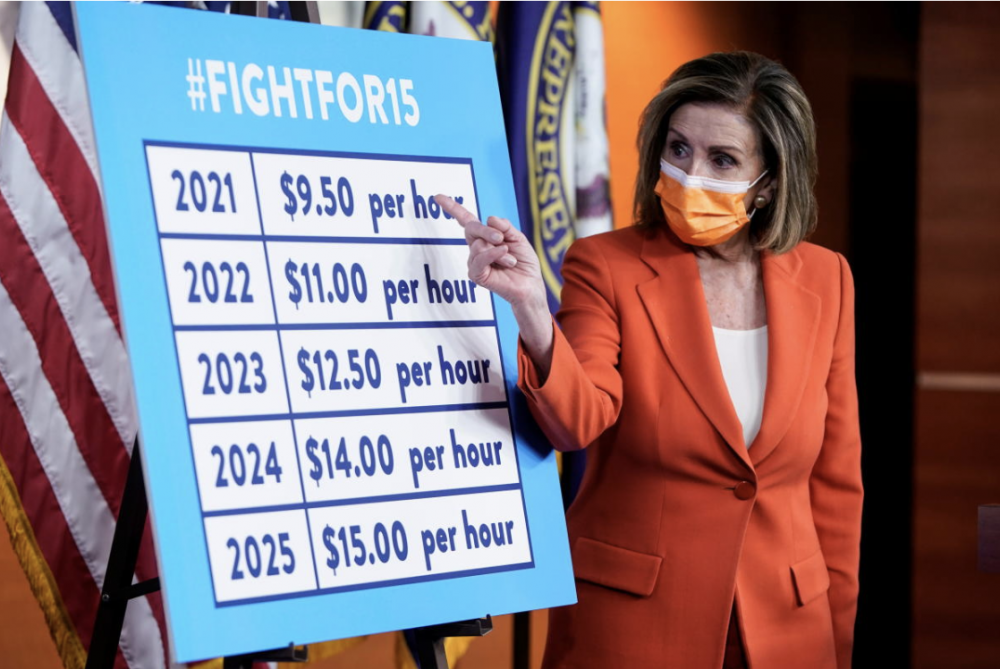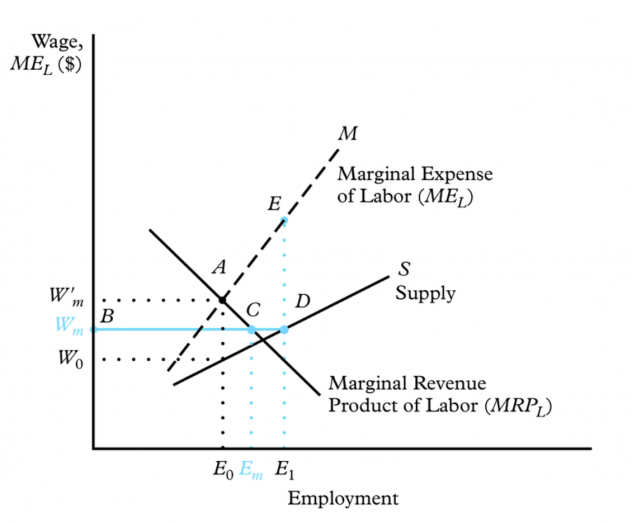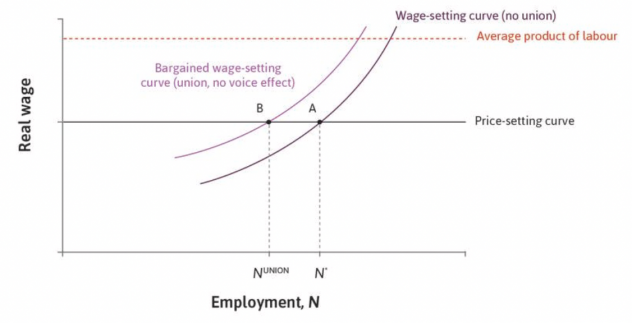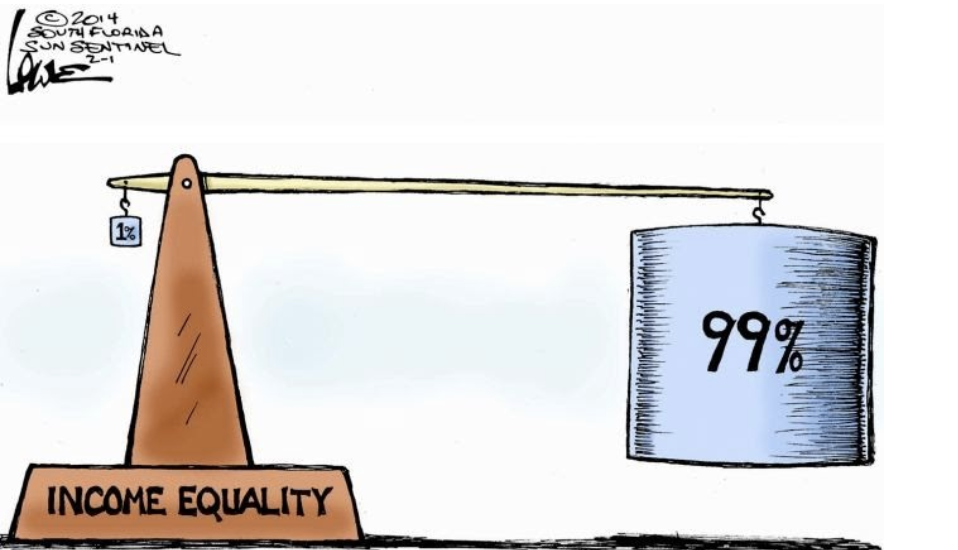
ARDA TUNCTURK – November 15, 2023
EDITOR: EVAN DAVIS
Imagine you are a worker living paycheck-to-paycheck, working endless hours, or maybe even holding multiple jobs to barely make ends meet. Every day, you constantly fear that your boss will lower your wage or worse: fire you. If that were to happen, you would lose your primary source of income, and you may no longer be able to afford those crucial bare necessities.
Now imagine that you are a small business owner who is beloved in the community, but you have to compete against a massive chain nearby. Your profit margins are low, but at least people love shopping at your place, making it so that you can save up money to invest in some new equipment that will allow you to streamline production, increase profit margins, and thus eventually raise your employees’ wages. However, one day, you find out that there has been a minimum wage increase, and that you have been paying your employees too little. That big chain across the highway simply cuts into their huge profit margins to meet the new regulations. On the other hand, you are currently not able to pay the new rate, and, a week later, your store shuts down.
Meet the two protagonists of the minimum wage story: the small business owner and the worker. Neither is more important than the other, and from this comes the debate on the minimum wage. A topic invoked at parties, debates, and pretty much anywhere else, it immediately sparks fierce debate whenever it is invoked. The following is why.
Firms and market structures
In labor economic theory, there are essentially two types of market structures. One is the competitive model in which the amount of labor demanded, and the amount of labor supplied will equal each other, as long as there is no outside interference from the government. This is called the market (Pareto) efficient equilibrium. In this scenario, the firm will act as a price-taker; thus, they will have to pay the set equilibrium market wage, or else they will be unable to hire any workers. The other, which many economists believe to be more representative of the U.S. economy, is the monopsony market: only one company employs workers. Under this theoretical model, a monopsony will hire fewer workers and pay workers less than it would under the market efficient equilibrium. This is a consequence of the fact that monopsonies can wage-set, meaning they have power over workers’ wages, so they choose to maximize their monopsony surplus, which results in lower wages and lower employment than the traditional market equilibrium. Realistically, there is no such thing as perfect competition and monopsonies, as there will never be an infinite number of firms (an assumption of perfect competition models), and even in markets with one supplier, there are always hidden competitors (such as alternative industries, and the possibility of future competitors). Nonetheless, for this article specifically (and for some actual theoretical work), monopsony theory is applied to research on high amounts of imperfect competition markets (big firms), and perfect competition is applied to research on more competitive markets (small firms). Additionally, there are varying degrees of imperfect and perfect competition, but for the sake of simplicity, it will not be covered here.
**Photo credit: Research paper
**Description: Imposing a minimum wage increases employment and worker pay under the monopsony model
With the more technical theory out of the way, here is where it gets interesting. Under perfect competition, if a minimum wage were imposed, it would act as a price floor above the market-clearing wage, meaning that firms would have to pay salaries at the price floor the government sets. In this case, two things happen in the market. Labor supply and demand would be distorted, as more workers would want to work in the market, but firms would want to hire fewer workers, as wages just increased — prohibitive costs for firms but more money for workers. Although employment would increase under the monopsony model since firms already hire fewer workers relative to the market quantity, employment would decrease under perfect competition since labor demand would be less than labor supply, where labor demand would be lower than the Pareto efficient equilibrium quantity of labor.
Most of the economics literature that has studied the effects of minimum wages on firms has found that minimum wages affect smaller firms much more than larger firms — where “small” and “large” firms are distinguished through relative labor market concentration rates. The higher a firm’s labor market concentration rate, the more it is a monopsony, and smaller firms are assumed to be a part of perfect competition. Because of these findings, it could be concluded that in more competitive markets that host smaller firms, a minimum wage increase can be damaging to the operations of small firms, either forcing them out of the market or into bankruptcy entirely. This aforementioned difference in measured outcomes between small and large firms is shown in an NBER paper by Dara and Michael Luca, which measured the differing impact of a minimum wage under the theoretical perfectly competitive and monopsony models by comparing exit likelihoods for 3.5-star and 5-star restaurants after a city-level minimum wage increase. The paper found that a change in the minimum wage increased the likelihood of exit for a 3.5-star restaurant by 10%, whereas there is no statistically significant impact for 5-star restaurants. In this case, 3.5-star restaurants are in a more competitive market, and 5-star restaurants are in a more imperfect competition market, as there are many more 3.5-star restaurants than those with five stars. Another intriguing effect is that 3.5-star restaurants increase prices, so they seem to pass on minimum wage costs to consumers. All of these research findings have substantial implications for labor economic theory. They suggest that monopsonists are significantly better off than competitive firms when a minimum wage is imposed, which has cascading effects on public policy. Additionally, if a minimum wage were implemented in a competitive market, we would expect to see a rise in prices, which is also something to consider.
On the worker side, papers such as David Card and Alan Krueger’s 1994 paper on minimum wages in the fast-food industry in New Jersey and Pennsylvania found insignificant effects on employment based on changes in the minimum wage, which goes against the grain in considering the theoretical minimum wage impacts in a competitive market. A possible theoretical implication of this finding is that many markets act as monopsonies rather than being competitive. Another thing to consider is that rather than decreasing employment, some firms will simply raise prices or cut into their profits to raise wages. Moreover, although there are some papers that make more minute claims about employment effects — i.e., minimum wages decrease employment among low-skilled workers (Neumark and Wascher) and workers aged 15-19 (Campolieti) — many economic papers find that minimum wages benefit workers, increasing wages and having statistically insignificant effects on employment. However, there is notable dissent from Neumark and Wascher (2006), who conclude in a meta-analysis that the most reliably designed studies find notably negative effects on employment.
Pseudo minimum wages: Union price-setting
Pamphlets. Flyers. Posters everywhere. This is what comes to mind when one thinks of unions, courtesy of many famous movies and the current UAW strike. However, unions are more than just demonstrators; they have a substantial effect on markets that is worth studying. By negotiating wages with companies on behalf of workers, they have the power to set a wage in a market, and even though union wage-setting acts in a similar way to the government imposing a minimum wage, there is still a benefit in analyzing the dynamics of union bargaining to see how they affect market outcomes. A very intuitive way to think of unions is that they act as worker monopolies, as they can set wages and maximize worker surplus. Of course, they still have to bargain with monopsonies for wages, as they do not want every worker to get fired.
**Photo credit: Core Econ
**Description: According to economic theory, unions will sometimes reduce employment
The most prominent paper on union wage effects is arguably Freeman’s 1980 paper, which found that contrary to the conclusions of many research papers in the 1970s, union wages tend to reduce wage inequality between men, but it featured no analysis for female workers. Subsequent papers have analyzed the effects of union wage contracts for women, with varied outcomes. For example, a paper by Card, Lemieux, and Riddell found that the effects of union wage bargaining are statistically insignificant, or there is even a slight increase in wage inequality. This could be explained by the fact that women who are a part of unions are likely to be vastly more skilled — thus already earning more — than their male counterparts. On the other hand, a follow-up paper by Card, Lemieux, and Riddell, which revisited Card’s 2001 paper that found no or slight adverse effects of unionization, found that there is a discernible difference in union wage changes between males and females, meaning that both female and male workers saw an increase in wages in unionized markets. Instead, changes in the effectiveness of unionization depended upon the sector (i.e., the public or private sector).
Shifting back to the discussion of Freeman’s findings, the inequality-increasing “between-sector” effect is smaller than the inequality-reducing “within-sector” effect, where the “between-sector” effect is the difference in wages between unions and nonunion labor markets and the “within-sector” effect is the dispersion of wages in the unionized labor market (the difference between the highest and lowest wages). Simply put, the market wage increases, and the wage gap between workers is not as large as before, increasing equality, which makes sense according to the theoretical model of unions having monopoly-like power. In addition, a paper by Dodini, Salvanes, and Willén, featured in the Discussion Series of the IZA (Institute of Labor Economics), found that “the negative earnings effect of labor market concentration is effectively eliminated upon reaching a union density of approximately 63 percent at the firm.” This effect is robust across highly concentrated markets.
Despite the strengths of unions I have discussed, this would not be a true economics article without the immortal phrase of, “Give me a one-handed Economist. All my economists say ‘on one hand…,’ then ‘but on the other.'” Thus, it is important to remember union effects on employment. An NBER working paper by Bertola, Blau, and Kahn showed that more union involvement in setting wages significantly reduces the employment levels of young and older individuals compared to prime-aged workers. Another critique of union power is that they distort the market-clearing effects of the perfect competition labor market model by removing a few workers from the market who would have worked but now cannot because firms do not value them enough to pay the increased wages. Similarly, if the value-added of workers starts to become higher than the marginal factor cost of workers — the increase in total costs of production for one more unit of a good being produced — then smaller businesses, which cannot take on the higher costs of production, may start to leave the market or go bankrupt outright, distorting labor supply in the long run and lowering employment. According to economic theory, those workers who could have found work under regular market conditions will no longer be able to find employment, possibly causing mass unemployment. Additionally, a decrease in firms could lead to a market resembling a monopoly on the firm side and a monopsony on the consumer side: increasing prices, decreasing employment, and decreasing wages.
There have been some empirical findings — Lemos 2004 — that when a national minimum wage is imposed (which acts similarly to a union wage being imposed in this context), firms will pass on wage costs in the form of price increases. Therefore, one could argue that union wages create this never-ending cycle of increased wages but a decline over time of purchasing power: wages went up, but so did prices. All of the conclusions in this paragraph are based mainly on theory and depend on specific market characteristics. Furthermore, depending on the given conditions, the conclusions may be true or false; for example, Lemos’ 2004 paper found a 4% increase in food prices and a 0.4% increase in the prices of other goods when a minimum wage increase of 10% is implemented. In this case, increasing the minimum wage does not cause a one-to-one price increase.
Conclusion
The art of setting a price floor in a given labor market, whether through unions or a minimum wage, is incredibly complex. There are a plethora of factors to consider, and, ultimately, the most essential aspects change from person to person, so this question will always be more of a normative rather than a positive one. Nevertheless, it is still fascinating to study the effects of different ways to increase wages and how they cause complex, minute changes that even the most seasoned economists would have never expected. So, while I have no conclusion on the topic, I do encourage everyone to do their own research on the subject and see for themselves what they value in society. Who knows? Some of the research findings may even change a few opinions.
Featured Image Source: Yahoo Finance
Disclaimer: The views published in this journal are those of the individual authors or speakers and do not necessarily reflect the position or policy of Berkeley Economic Review staff, the Undergraduate Economics Association, the UC Berkeley Economics Department and faculty, or the University of California, Berkeley in general.





